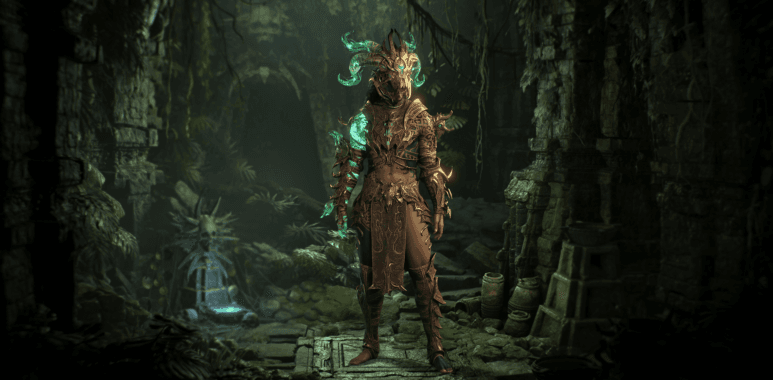
Diablo 4: Vessel of Hatred Expansion Review
Since its remarkable launch, Diablo 4 has experienced significant ups and downs, particularly with the underwhelming first season that followed. Some players may still hold a grudge against Vessel of Hatred, viewing it through the lens of that initial disappointment—an unfortunate stance, as Vessel of Hatred truly excels.
Following the rocky start, Blizzard has been diligently working to rebuild trust among its community. They have eliminated aspects players found frustrating and introduced fresh, engaging systems while fine-tuning existing features. With this first expansion, it’s fair to say that Vessel of Hatred feels like an almost entirely new game, offering a wealth of content for both new and returning players.
Set about a month after the events of Diablo 4, Vessel of Hatred plunges players into a Sanctuary plagued by threats, from vampires to relentless demonic hordes. It’s a chaotic time in the realm.
The narrative begins as Neyrelle ventures into Nahantu, a vast jungle region located south of Hawezar and Kehjistan. Long-time fans will recognize this area from Diablo 2, where they confronted the Lord of Hatred. This time, however, thanks to Neyrelle’s actions at the campaign’s conclusion, Mephisto is imprisoned within a soulstone.
Yet, his imprisonment does not fully restrain his threat, as his corruption seeps out, infecting Neyrelle and her allies with profound hatred, affecting the entire region. This malevolence manifests as grotesque creatures plagued by a worm-like decay and fungal eruptions entwined with twisted vines.

Hatred has deeply permeated Nahantu, and with Mephisto’s return, it is once again bubbling to the surface. The Spiritborn, shamanistic monks from a long-fallen ancient civilization, protect the jungle inhabitants. These warriors harness the spirit realm and draw power from their spirit guardians to combat the onslaught of hatred-fueled beasts.
The four guardians can be categorized into two groups: those with passive abilities and those without. The fiery, swift Jaguar and the defensive Gorilla each provide unique buffs through their passives—Ferocity and Resolve, respectively. It’s quite straightforward to craft a build that maximizes these passives, transforming you into a formidable force on the battlefield.
Conversely, the Eagle and the Centipede introduce different dynamics to gameplay. The Eagle enhances mobility, buffing movement speed and evasiveness, while the Centipede excels in damage-over-time, favoring lingering poison effects and player survivability over direct damage.
Blizzard has evidently invested significant effort into ensuring each guardian feels distinct, particularly evident in their Ultimate abilities. The Jaguar showcases its speed and aggression with The Hunter, while the commanding Eagle unleashes a surge of electricity to knock down foes with The Seeker.
While all the guardians are visually striking, the Centipede leaves the most lasting impression with its towering design and deep, resonant sounds during its attacks, even if it may not be the optimal choice in the endgame.

At level 15, Spiritborn players unlock their class specialty, the Spirit Hall. Each spirit offers its unique buff, applying its keyword to all abilities. This customization can be transformative, though some buffs, while potentially strong, lack excitement. For instance, the Gorilla buff grants 100% of Thorns damage to all Gorilla abilities while generating a protective barrier. In contrast, the Jaguar simply makes every 15th hit deal 15% of the damage from the previous half-second—strong but less engaging in practice.
Upon reaching level 30, players unlock a second Spirit slot, offering more passive enhancements rather than groundbreaking changes. These buffs may include increased critical strike chance or healing, adding value but lacking the transformative impact of the first slot.
During the review period, I played as the Spiritborn class. While undoubtedly compelling, it didn’t resonate with me personally. Having never been fond of the Monk class in Diablo 3, I found the playstyle between the two classes quite similar. Although the skills are varied and well-designed, many lacked the thrill of excitement; they felt overly balanced.
While build-crafting in ARPGs isn’t typically my forte, the idea of adopting a mono-spirit guardian playstyle is tempting, as many Jaguar skills synergize well with each other. However, no single guardian can do it all, so to truly unleash the class’s potential, you’ll need to blend and match abilities to achieve a balance of defense, offense, and mobility.
I have no doubt that seasoned players and content creators are already crafting some powerful builds. However, for average players, the Spiritborn’s array of keywords and passives may feel overwhelming and convoluted.

Beyond the jungle settings of Nahantu, familiar elements from previous Diablo installments are returning. Changes to Glyph leveling reminiscent of Diablo 3’s Legendary Gems and the reintroduction of Rune words from Diablo 2 add nostalgia. However, perhaps the most intriguing revival is the Mercenaries system.
Similar to Diablo 3’s Followers, Mercenaries in Diablo 4 allow you to choose a companion for solo play. They provide not only additional damage but also various buffs to enhance your character.
Each Mercenary can be acquired in two ways: hiring them directly so they accompany you throughout the overworld or enlisting them as reinforcements for specific situations. When hired, they fight alongside you and gain rapport—experience points to level up—at the standard rate. As reinforcements, they activate under specific conditions, allowing for strategic combat options, but will earn rapport at half the usual rate.
Mercenaries unlock as the story progresses, starting with Raheir, a tank character you meet early in the campaign. After accompanying him through the main storyline and unlocking your hideout, you can recruit him for side quests that unveil more about the Pale Hand mercenary company.
The campaign explores the complexities of relationships through the lens of Mephisto’s influence. His insidious power gradually erodes trust and isolates individuals, turning them into hollow shells filled with hatred. This thematic depth allows the narrative to delve into poignant questions about friendship, reliability, and the nature of pain inflicted by loved ones.
These themes are interwoven throughout the approximately eight-hour campaign, presenting an exploration of hatred, forgiveness, and moral dilemmas in Sanctuary. The storytelling in this chapter of Diablo 4 is arguably the best it has ever been.
I concluded the campaign at level 50, indicating that the experience is well-tuned to transition players seamlessly from level 1. I didn’t pursue many side quests, apart from those to unlock the Mercenaries, nor did I engage in public events, yet I still progressed to level 50 comfortably.
However, the joyride took an abrupt turn once I stepped outside Kurast after completing the story. The first elite mob pack I faced quickly overwhelmed me, leaving me bewildered. Had I forgotten to equip gear? Was one of my items damaged?

Suddenly, my jumbled build, which had been performing adequately moments before, faltered against enemies that hit much harder than expected. It felt as though I had been transported to a parallel universe where my character was comically weak. I was utterly confused; just moments earlier, my build was thriving, yet now, the foes were punishing me for simply being present.
Cautiously, I ventured into a dungeon, slowly progressing to secure better gear and affixes. The first Legendary item I discovered revealed the problem: an item level jump of nearly 100. It took only a couple of dungeons to get back on track, but the sheer abruptness of the difficulty spike at level 50 was disheartening.
We were informed that the version of the game I played differed from what will launch next Tuesday, and I trust that the 2.0 patch will address these concerns. This is particularly crucial for casual players, as the sudden wall of difficulty can feel insurmountable, and such a disorienting experience could easily drive them away from the game altogether.
Diablo 4 launched with Season 0 just over a year ago, and Vessel of Hatred has transformed the game into something nearly unrecognizable. Every system has undergone significant enhancements, resulting in a vastly improved gameplay experience. Season 5, just prior to the expansion’s release, marked the peak of enjoyment for Diablo 4.
With the launch of Vessel of Hatred, even more changes are being implemented, though not all may be perceived positively. I didn’t fully explore the endgame during my review period, leaving some uncertainty about the lasting impact of these new systems. Nonetheless, the future looks promising, and the past 15 months demonstrate the commitment of the Diablo developers to refining the game. Here’s to another year of Diablo 4.

